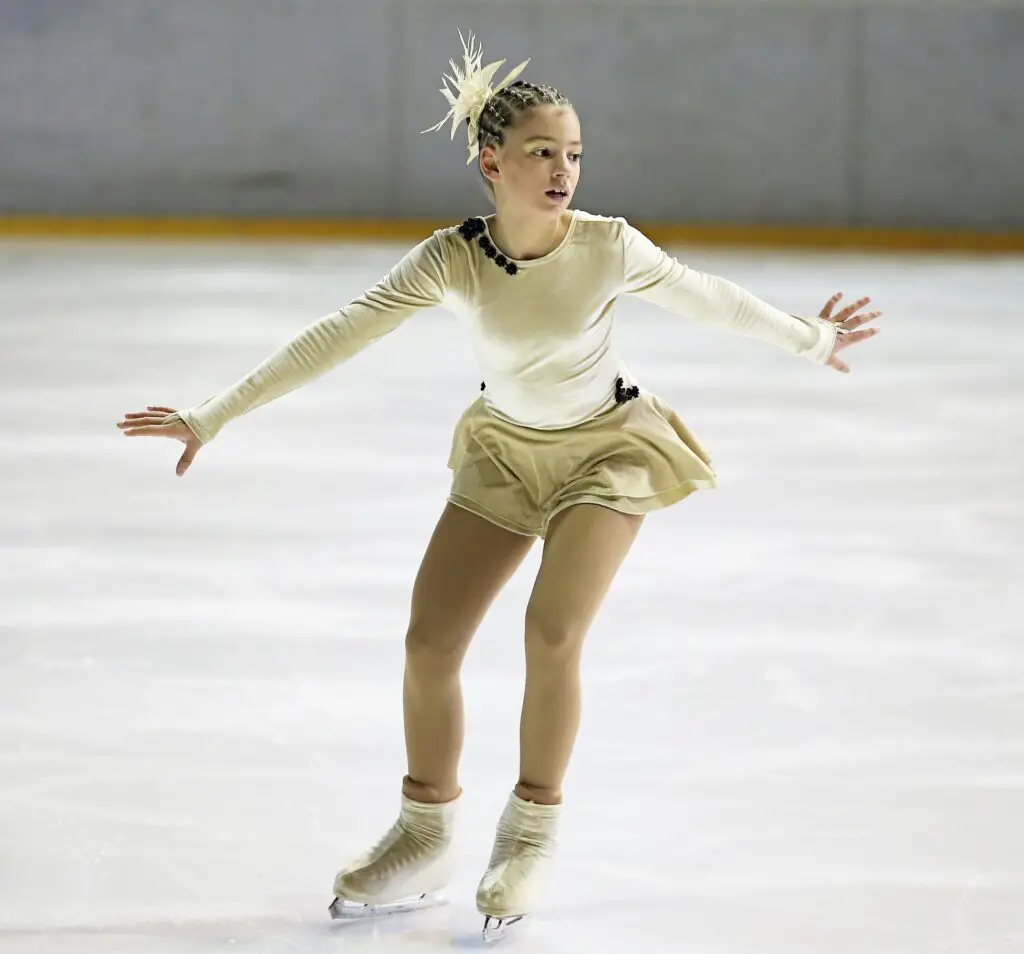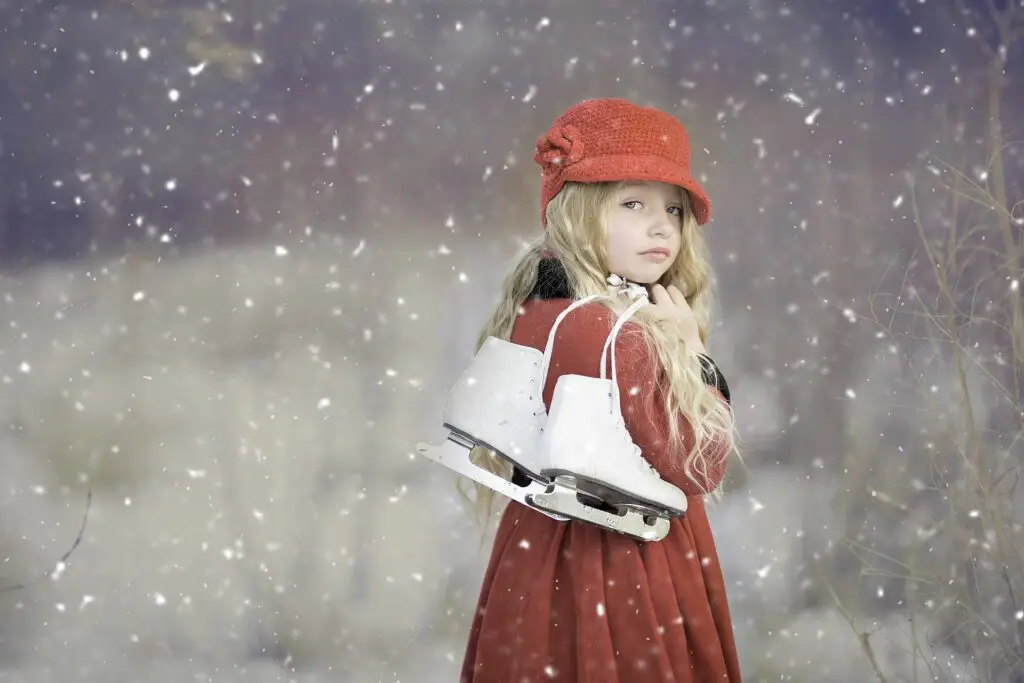How old for ice skating? What’s the best age to get started? If you’re wondering when you or your child can get into the sport of ice skating, I’ve put together a comprehensive response after research to help answer your burning question.
There’s no ideal age to start ice skating. However, it would be best for children to introduce them to ice skating when they can comfortably walk on their own, have full body control, coordination, and flexibility. This is usually between the ages of 3 and 6.
On the other hand, there’s no upper age limit either. Therefore, adults can get into ice skating provided they can stand and walk on both legs and have appropriate balance, flexibility, muscle endurance, control, and body coordination.
Ice skating is fun and doesn’t take much time to learn. However, one needs to put in the right energy in learning. In the rest of this post, we’ll dive deeper into the considerations to look for before introducing your child or children or yourself to ice skating. So, let’s get to it!
How Old for Ice Skating? When to Start Ice Skating
The appropriate age to start ice skating depends on physical body development, health status, emotional and psychological stability. This is to say, the right age to start ice skating has very little to do with the age factor. Therefore, one can get started into ice skating as soon as they tick yes for the above points to consider.
That being said, children exhibit remarkable physical body development and health between 3 and 6 years. At the age of three, they may not be emotionally and psychologically stable. However, at six years, this shouldn’t be a problem.
Therefore, if you have to introduce them at an early age, three years would be ideal. Nonetheless, at six years, the child is old enough, has achieved remarkable physical body development, health status emotional and psychological stability, making it the best age to start ice skating.
As an adult, there’s no upper age limit to join ice skating. So, you can join the sport when you have no physical disabilities hindering your ability to stand and walk on both legs. You also should have the appropriate balance, flexibility, muscle endurance, control, and body coordination. This is your ticket to trying out any ice skating discipline.
How Old for Ice Skating? Everything to Consider before making a decision

Below are the reasons why these considerations are important before getting to ice skating.
More Reading: Is Ice Skating Hard? (Your Burning Question Answered Comprehensively)
1. Body Balance
Ice skating uses ices skates fitted with a thin metal blade running from the toe to the heels. For beginners, it’s often a hassle staying on balance considering ice skates have a shorter blade base. So, it’s easy to fall backward or forward because of stability issues.
Think about it! You need to learn body balance and stability when you wear ice skates for the first time. Therefore, it makes sense to have full-body balance and stability before you think of putting on ice skates.
For children, as early as three, some can stand independently, walk and have the required body balance. This gives them an easy time when they wear ice skates for the first time because the next thing they need to do is learn balance on ice skates.
For adults, body balance isn’t an issue unless you’re already too aged.
2. No Severe Physical Disabilities
Physical disabilities affecting the lower limbs never mean well for ice skating. For the better part, you need to stand on your feet when ice skating. Unfortunately, if a disability affects your lower limbs, it also means wearing ice skates may be a challenge.
3. Physical Strength and Muscle Endurance
Ice skating is a physical sport, meaning one needs enough energy in aerobic respiration. Without enough physical strength and muscle endurance, getting to ice skating may not be a good idea. However, between ages three and six, children have some physical strength and muscle endurance to be on ice skates for some time.
Depending on how hard you want to go in ice skating, you’ll also require a considerable amount of strength and muscles endurance. For example, ice speed skating and hockey skating are more vigorous, thus require top-notch physical strength and muscle endurance.
More Reading: How Many Calories Do I burn Ice Skating? {640-850}
4. Full Body Coordination and Flexibility
The correct ice skating posture involves bent knees, which should be above the toes. Besides that, the shoulders should be over your hips ad your hands shouldn’t be all over the place in the air because you can easily lose balance.
In addition, your skates should be parallel to your legs and knees and not pronating. Therefore, the correct skating posture requires full-body coordination from your upper body to your lower body. If you still don’t have control and flexibility, it could mean you or your child isn’t ready for ice skating.
More Reading: Rollerblading Vs. Ice Skating | the Ultimate Comparison
5. Emotional and Psychological Stability
Ice skating can be a little intimidating sometimes. Therefore, skating on ice and wearing ice skates for the first time takes a lot of confidence, emotional and psychological stability. If you or your child lacks any of these, it could mean you’re not ready for ice skating.
The problem is, if you try ice skating without emotional and psychological stability, you may put your safety and others in jeopardy.
More Reading: Is Ice Skating Like Rollerblading? | {the Ultimate Comparison}
Ice skating Disciplines to try out

There’s not one but several ice skating disciplines you or your child can try out when you meet the minimum requirements for ice skating. If you’re wondering what they are, here is a quick rundown!
- Figure skating is an artistic form of ice skating that involves performing jumps and dance and stylistic figures on ice skating rinks.
- Ice hockey skating is a contact sport played by a team of six players from each side. It involves using a stick to push a puck into the opponent’s goal to score.
- Ice speed skating—this ice skating discipline involvescontenders racing fixed distances in short and long tracks.
- Recreational ice skating—Recreational ice skating is mostly done for pleasure and health benefits.
- Bandy—this is a contact sport, similar to ice hockey with some slight differences.
- Ringette—thisis a contactless ice skating sport similar to ice hockey.
- Ice Cross Downhill—this is anextreme ice skating sport played downhill on a walled track.
- Barrel Jumping—this sport involves speed skaters jumping over a series of barrels and is judged based on the number of barrels they jump over.
This is only the sneak peek view. I did a comprehensive article going into the details of the common ice skating disciplines. Here’s the link to the post!
What to Wear When Ice Skating
Due to the nature of ice skates and ice skating rinks, it’s advisable to wear the right gear when ice skating. This will help keep you warm and safe from many dangers associated with ice skating. So, below is a quick rundown of what to wear when ice skating.
- Protective Gear—this includeswearing protective gear like helmets and proper padding.
- Long Pants—a long polyesterpant goes a long way when ice skating.
- Socks—socks help to keep your legs warm and safe in case you fall.
- Gloves—gloves help keep your hands warm and safe in case you fall.
- Long-Sleeved Shirts—help keep your hands warm.
- Neck Scarf—covers your neck and keeps it warm.
- Light Sweater—protects your body from the cold.
- Light Jacket—protects your body from the cold.
- Knit Hat—protect your head from the cold.
- Ice Skates—you should use the right ice skates according to your preferred ice skating discipline. Also, the skates should be properly fitting and comfortable.
Again, this was a sneak peek view of what to wear ice skating indoor or outdoor. Below is the comprehensive article where I go into all the details of what to wear ice skating.
More Reading: What to Wear Ice Skating Indoors {10 Essential Wears}
How Old for Ice Skating? Wrapping Up
Getting started in ice skating has no definitive lower or upper age limit. Therefore, one can start ice skating as soon as they have proper body balance, no severe physical disabilities, physical strength and muscle endurance, and full-body coordination, flexibility, and emotional and psychological stability.
If you or your child meets these minimum requirements, you can get into the fun sport of ice skating. Cheers!


